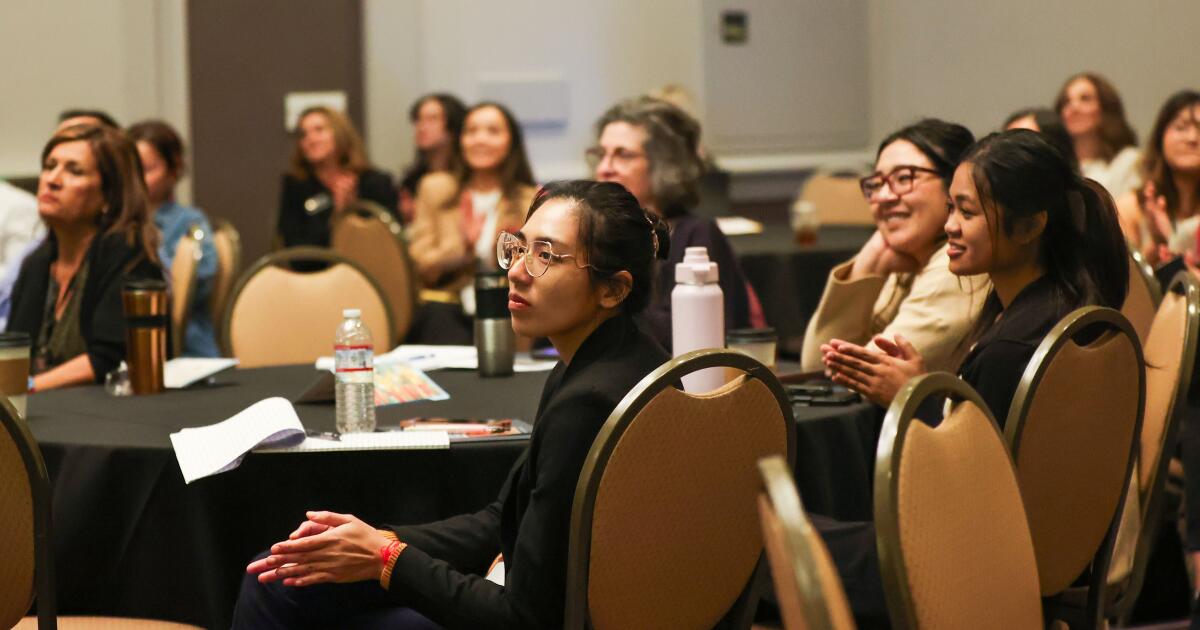Long Beach is home to about 20,000 Cambodian Americans — the largest population of Khmer people in the United States. Yet while attending classes at the Long Beach Unified School District, Savannah Thy said she rarely saw her own community represented in her daily lessons.
Filling a Gap
“The only time I was taught anything about Cambodia was the Khmer Rouge,” Thy said, referring to the communist regime that ruled the country in the 1970s. According to her history teachers, Cambodians were victims of genocide and war under that regime. There was no mention of the refugees who had formed a thriving community in Long Beach, nestled along the city’s Anaheim corridor called Cambodia Town.
“I believe that there’s so much more to our culture than just that piece of history,” Thy said.
A New Model Curriculum
But now, students across California will have a chance to learn about Cambodian Americans and other Asian communities through the Southeast Asian Studies Model Curriculum, which is the first of its kind in the country.
While not mandated, the state’s K-12th-grade teachers can access dozens of suggested lesson plans for Hmong American, Vietnamese American, and Cambodian American histories online to incorporate into their classrooms. The curriculum is available for teachers to use now, as a whole or in smaller segments.
Teaching Compassion
“It’s really important to center the people who experienced those histories and cultures,” said Mariko Manos, the history and social sciences manager at the Orange County Department of Education, who spearheaded the creation of the curriculum for the California Department of Education. “To me, that’s what’s missing in our history books.”
An Opportunity to Heal and Showcase Resilience
For many scholars and activists, the new curriculum is a chance to heal and showcase resilience. Income inequality is highest among Asian Americans, with about 1 in 10 Asian Americans living in poverty, and the rate is even higher for certain subgroups, such as Hmong Americans and Cambodian Americans.
“When you’re not aware of different communities and what they’ve gone through, we’re also not getting federal dollars to be able to fund different community initiatives,” said Laura Ouk, a writer on the Cambodian American curriculum.
Chia Vang, a history professor, sees the three-pronged curriculum as a testament to the resilience of Southeast Asian communities. Her family resettled in St. Paul, Minn. — home to the highest concentration of Hmongs living in the U.S.
“People never thought that we would survive in this country because we were from a more agrarian background,” Vang said. “A curriculum like this is completely contradictory to these predictions. In fact, we have not only survived, but really thrive to tell our own stories in this fashion.”
Conclusion
For Savannah Thy, learning about her community’s history and culture is a significant step towards healing and embracing her identity. She believes that the new curriculum has the potential to make a lasting impact on future generations.
I’ve been waiting for this to happen for a very long time, and I’m just hoping that the next further generations will be able to know more about their culture,” Thy said.
FAQs
Q: What is the Southeast Asian Studies Model Curriculum?
A: The Southeast Asian Studies Model Curriculum is a new program that provides suggested lesson plans for Hmong American, Vietnamese American, and Cambodian American histories for California K-12th-grade teachers.
Q: How many Cambodian Americans live in Long Beach?
A: About 20,000 Cambodian Americans live in Long Beach.
Q: What are the goals of the new curriculum?
A: The goals of the new curriculum are to promote cultural awareness, understanding, and empathy among students. It aims to fill the gap in representation of Asian American communities in history lessons and provide a more nuanced understanding of their experiences and cultures.
Q: How can teachers access the curriculum?
A: Teachers can access the curriculum online, where they can find dozens of suggested lesson plans for Hmong American, Vietnamese American, and Cambodian American histories.


